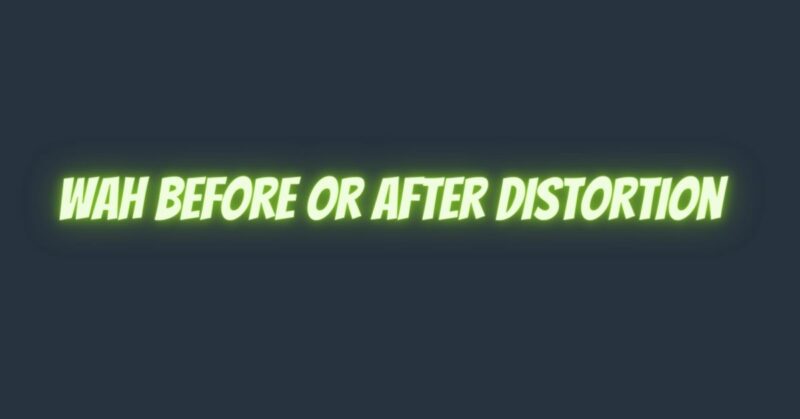The arrangement of effects pedals in your signal chain is a creative endeavor that shapes the sonic landscape of your guitar. Among the choices to consider, the placement of a wah pedal and a distortion pedal can profoundly influence your tone, expressiveness, and overall sonic character. In this article, we’ll delve into the considerations, advantages, and creative possibilities of using a wah pedal before or after a distortion pedal, helping you make informed decisions to achieve a captivating and dynamic guitar sound.
Wah Before Distortion: Expressive Preamplification
Advantages:
- Tonally Unique: Placing the wah pedal before the distortion allows the wah to modulate the clean signal before it’s saturated by the distortion, yielding a distinctive and expressive sound.
- Responsive Dynamics: The wah pedal’s filtering effect responds dynamically to the intensity of your playing, offering a wide range of tonal sweeps before the signal hits the distortion.
- Searing Solos: Using the wah before distortion can create dramatic swells and shifts in tone, making it ideal for expressive solos and dramatic rhythm passages.
Considerations:
- Wah Settings: Adjust the wah’s sweep range and Q-factor to ensure that the expressive peaks and valleys don’t interact negatively with the distortion.
- Pedal Interaction: Experiment with the order of your pedals to find the perfect balance between wah modulation and the character of the distortion.
Wah After Distortion: Sculpting Distorted Dynamics
Advantages:
- Tonal Focus: Placing the wah after the distortion pedal allows the wah to shape the saturated signal, accentuating specific frequency ranges in the distorted sound.
- Sculpted Dynamics: The wah pedal applied after distortion lets you fine-tune the dynamics and tonal characteristics of the distortion, creating a more controlled and sculpted tone.
- Filtered Flourishes: Using the wah after distortion allows you to add filtered flair and unique textures to your sustained and distorted notes.
Considerations:
- Distortion Clarity: Be cautious with the distortion settings to ensure that the added dynamics from the wah don’t obscure the clarity of the distortion’s sound.
- Wah Sensitivity: Adjust the wah’s sensitivity to avoid overemphasis on certain frequency ranges that could lead to harsh or unwanted frequencies.
Combining Both Approaches
Consider employing both methods for a diverse sonic palette:
- Wah Before Distortion: Use this approach when you want to infuse your expressive playing with dramatic sweeps and unique dynamics before the signal is distorted.
- Wah After Distortion: Apply this approach to sculpt the distorted sound and emphasize specific frequency ranges with filtered textures and controlled dynamics.
The decision of whether to place a wah pedal before or after a distortion pedal hinges on your tonal preferences, playing style, and sonic storytelling. Each approach offers distinct advantages and considerations. By understanding how each placement influences dynamics, tonal shaping, and expressiveness, you can harness the potential of both pedals to craft a guitar tone that is uniquely yours—a tone that merges the expressive sweep of the wah with the captivating allure of distortion. The result is a dynamic and immersive sonic journey that reflects your individual musical expression.

